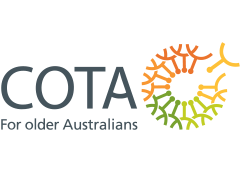What is the Aged Care Star Rating System?
When choosing a provider for yourself or an older person in your life, you don’t want to choose a facility known for secrecy or incidents caused due to a lack of trained staff — as a result, the Star Rating system is a useful tool for the public to know about.
- Jump To Section:
- Overview
![The Star Rating System was designed to help you find the right kind of care, but knowing how the system works can help you judge things for yourself. [Source: iStock]](https://agedcareguide-assets.imgix.net/news/articles/wp/starratingsystem__3010.jpg?fm=pjpg&w=700&format=auto&q=65)
The Star Rating System was designed to help you find the right kind of care, but knowing how the system works can help you judge things for yourself. [Source: iStock]
The Aged Care Star Rating System, introduced in December 2022, aims to provide transparency and assist families in making informed decisions when choosing aged care facilities.
The system, overseen by the Aged Care Quality and Safety Commission, assigns facilities a Star Rating based on four key areas: Compliance, Residents’ Experiences, Staffing and Quality Measures.
Key features of the Star Rating System:
- Compliance (30 percent weighting) measures whether the facility meets government regulations and aged care standards — non-compliance can significantly reduce the overall Star Rating;
- Residents’ Experience (33 percent weighting) gathered through annual surveys of residents, covering satisfaction with care, comfort and daily experiences within the facility;
- Staffing (22 percent weighting) is evaluated by how much care time residents receive from nurses and personal care workers, compared to government-set targets; and
- Quality Measures (15 percent weighting) assessed through clinical care indicators such as falls, unplanned weight loss, pressure injuries, medication management and the use of physical restraints.
Why is it helpful?
The Star Rating System is designed to provide greater transparency and take the guesswork out of selecting aged care facilities. It allows families to easily compare different homes, offering a clear snapshot of the quality of care being provided. This can be particularly beneficial for those unfamiliar with aged care, as it reduces the risk of choosing a poorly performing facility by mistake.
Additionally, the public nature of the ratings encourages facilities to maintain or improve their standards, as it directly impacts their reputation.
Criticism and pitfalls
While the system aims to simplify decision-making, it has also faced backlash. Critics argue that it may oversimplify complex issues, potentially leading families to place undue trust in a Star Rating System that doesn’t always capture the nuances of individual facilities.
For example, there’s limited survey data with only around 10 percent of residents participating in the Residents’ Experience survey, which might not represent the entire population of a facility.
Additionally, there’s a lack of context for lower ratings and a two- or three-star facility may still provide safe care, but families could mistakenly view them as ‘unsafe’ due to the lower rating.
There’s also a focus on staffing and the emphasis on care minutes from registered nurses doesn’t account for other important aspects of care, such as the role of lifestyle staff and other support personnel.
Despite these concerns, 97 percent of aged care homes currently meet or exceed the expected level of care, suggesting the system has driven positive changes across the sector.
The Aged Care Star Rating System may be a helpful tool for families seeking transparency in what can be a daunting decision-making process. However, it’s essential to interpret the ratings with care and consider visiting the facilities in person or speaking to current residents and staff to get a complete picture.
For more information, you can check the official government platform, My Aged Care, which updates the ratings every three months based on the latest data.
Overview
The Star Rating system was introduced in December 2022 and aged care providers are given a Rating based on their performance across four categories which are weighted differently.
Here’s what you need to know about each Rating:
One Star — needs significant improvement
Two Stars — needs improvement
Three Stars — satisfactory quality of care
Four Stars — positive quality of care
Five Stars — the highest quality of care
To check the Star Rating of a provider, check the government register using the ‘Find a Provider’ tool online. Through clicking the option to see the Rating, you will be able to see the Overall number of Stars, but clicking through to the individual facility profile will allow you to see the breakdown of each category.



![There are a number of steps you can take to prevent or minimise your risk of elder abuse. [Source: iStock]](https://agedcareguide-assets.imgix.net/news/articles/wp/14_7_2022-Elder-Abuse-prevention.jpg?fm=pjpg&w=162&h=124&q=80)
![A mental health specialist can provide an impartial, unbiased person to talk with about problems in your life. [Source: Shutterstock]](https://agedcareguide-assets.imgix.net/news/articles/wp/Counselling_201130_051501.jpg?fm=pjpg&w=162&h=124&q=80)
![Guests should be aware that the older loved one with dementia still wants and enjoys conversation and laughter. [Source: iStock]](https://agedcareguide-assets.imgix.net/news/articles/wp/Making-Christmas-dementia-friendly-17_12_2020-copy_201217_070226.jpg?fm=pjpg&w=162&h=124&q=80)
![If you’re after government-funded support, you’ll need to be assessed. [Source: iStock]](https://agedcareguide-assets.imgix.net/news/articles/wp/ACATACAS__3010.jpg?fm=pjpg&w=162&h=124&q=80)
![Learning about how much it may cost you to receive aged care will help you to refine your fiscal planning. [Source: iStock]](https://agedcareguide-assets.imgix.net/news/articles/wp/nursinghomecosts__111.jpg?fm=pjpg&w=162&h=124&q=80)


